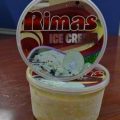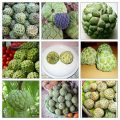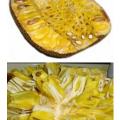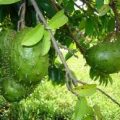Growing the fruit of life
Breadfruit is not a popular tree but history owes something from it. The tree is first known in Jamaica in 1793, when it saved many people from starvation due to five hurricanes and severe drought that almost ruined that country. Planters of the West Indies heard of this “wonderful” tree growing in the Pacific Islands that provides “bread” all year round. Explorers were persuaded to mount expeditions to collect the species. Since then, the breadfruit’s common name became universal; all countries associate the fruit to “bread” or “fruit of life”.

Breadfruit is not ornamental
Breadfruit (Artocapus altitis) is often mistaken as an ornamental tree for its beauty that stands out in any garden, grove, or yard. It grows 40-60 feet tall, with broad palmated leaves decorated with sensual, dark-green lobes (fruits), weighing up to 10 pounds each.
It is widely distributed in New Guinea, Indo-Malayan archipelago, Philippines, Hawaii and Central America.
In our country, it is known as rimas. It is a close relative of the jackfruit or langka and belongs to mulberry family, Moraceae.
Not too many Filipinos know rimas, except in some provinces like Laguna, Cavite, Leyte, and Bicol where rimas is cooked as vegetables (with coconut milk) and sometimes processed as candy.
In foreign countries, breadfruit is often baked or roasted whole and eaten ripe as fruit. Malayans peel the ripe fruits, slice the pulp and fry it in syrup or palm sugar until it turns crisp and brown.
In Brazil and Barbados, breadfruit is more popular for industrial use. The dried fruit is processed into flour and found as good substitute for wheat flour in making bread. Breads made from breadfruit flour are found more nutritious because breadfruit flour is much richer in lysine, carbohydrates, and other essential amino acids than wheat flour.
Nothing is wasted in breadfruit; even the seeds are cooked (boiled and roasted) and eaten with salt. In West Africa, seeds are sometimes made into puree since they are rich in starch.
The young or underripe fruits are boiled as feed supplements in livestock. Experiments conducted by technologists at the United States Department of Agriculture (USDA) have demonstrated that dehydrated breadfruits can constitute a highly digestible stock feed.
Propagation and culture
Breadfruits are of two types; the seedless and the seeded (the later is often referred as breadnut).
Breadfruits are best propagated through root cuttings, since tropical seeds like that of breadfruits tend to lose their viability in a few weeks and are very hard to store.
One practical and easy method of inducing suckers or shoots is by uncovering or deliberately injuring the root of matured breadfruit tree. Pruning the parent tree increases the number of suckers. For rapid multiplication, it is better to adopt root cutting of about 1 to 2 1/2 inches thick and 9 inches (22 cm) long.
In removing the sap or latex, the ends of the cuttings may be dipped into a solution of potassium permanganate- an odorless crystalline compound used as bleach. Once the latex has been removed, the cuttings are planted close together in sand to induce root growth. They should be shaded and watered daily.
Callus (plant tissues that give rise to new plantlets) start to form in 6 weeks and rooting may vary from 2 to 5 months. During this time, they can be transplanted into plastic bags containing mixture of soil and sand and are kept under mist for a week with 65% shade. The rootings should be given liquid fertilizer (NPK) and regular waterings. When the primary root system is well developed, they can now be transplanted in open field.
Young breadfruit trees should be planted in well-enriched holes of 15 in (40 cm) deep and three feet wide. The recommended distance between trees is 25 to 45 ft. Breadfruit starts bearing fruits in five years and will be productive for 50 years. Some growers find pruning convenient for stimulating new shoots and keeping the tree from being tall for ease in harvesting.
On harvesting
Breadfruits are considered matured enough for harvesting if small drops of latex start to ooze on the fruit’s surface. Matured fruits are picked using a fruit stalk with a forked stick. One should take an extra care in picking the fruits to avoid bruising or splitting that could affect the fruits’ market quality and value.
Harvested fruits are packed in cartons in which they are separated individually by dividers.
The Philippines and the breadfruit
It is a little disappointing to know that no studies had been conducted yet to fully tap the potential of this indigenous plant species. Breadfruit is just one of those “neglected” and underutilized species that need to be given special attention and scientific support by the government.
Hopefully, research initiatives undertaken by concerned agencies such as the International Plant Genetic Resources Institute (IPGRI) will give proper recognition to those species that are “also” crucial for the attainment of food security and promoting economic development.
Who knows, the Philippines may be the first to place breadfruit into the mainstream of global trade.
———————
Source:
http://www.hort.purdue.edu/newcrop/morton/breadfruit.html#Description
By: by Mary Charlotte O. Fresco, BAR Chronicle, August 2002 Issue (Vol. 3 No. 14)







Where can we purchase planting materials for Iloilo and Palawan. Thank you.